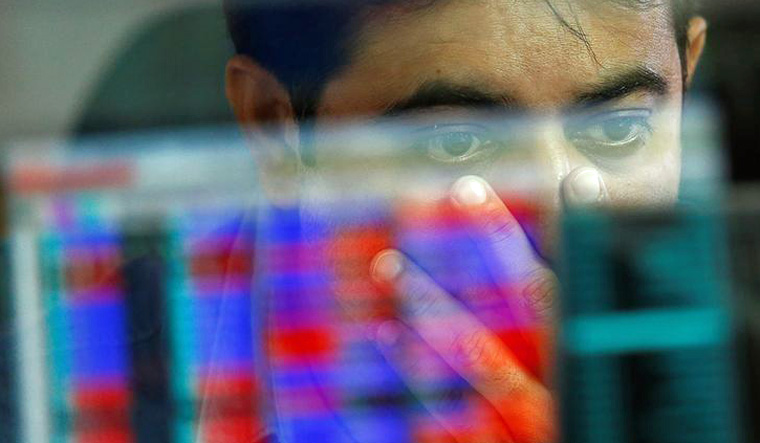A day after a government report confirmed that growth in eight core sectors slowed down to 2.1 per cent in July, domestic equity benchmark BSE Sensex dropped below the 37,000 level, plunging over 400 points, in early trade on Tuesday. The early loss tracked heavy selling in financial and auto stocks amid weak domestic factors such as flailing GDP growth and slowdown in automobile sector, in addition to other global cues.
The 30-share index was trading 403.87 points, or 1.08 per cent, lower at 36,928.92 at 0930 hours, while the broader Nifty sank 124.85 points, or 1.13 per cent, to 10,898.40 in early trade. It is to be noted that this is the first day of markets in India after the Centre announced amalgamation of 10 public sector banks in the country to form four entities. The markets opened after three days, following weekend and Ganesh Chaturthi holiday.
In the previous session on Friday, the BSE barometer ended 263.86 points, or 0.71 per cent, higher at 37,332.79, while the Nifty rose 74.95 points, or 0.68 per cent, to close at 11,023.25.
Top losers in the Sensex pack in early trade on Tuesday included Tata Motors, Tata Steel, ICICI Bank, ONGC, HDFC, M&M, NTPC, Vedanta, ITC and SBI, which fell up to 4 per cent.
READ: Look at the bright side: How to take advantage of economic slowdown
Meanwhile, tracking the lacklustre opening in domestic equities amid strong dollar demand from banks and importers, the rupee tumbled by 67 paise to 72.09 against the US currency in early trade. TechM, HCL Tech, TCS and Infosys jumped up to 2 per cent.
According to traders, market sentiment took a hit on account of weak macroeconomic data releases and double-digit decline in auto sales in August as the sector continued to reel under one of the worst slowdowns in its history.
Official data released after market hours on Friday showed that India's GDP growth slipped to an over six-year low of 5 per cent in the June quarter of 2019-20, hit by a sharp deceleration in manufacturing output and subdued farm sector activity.
Additionally, the country's manufacturing sector activity declined to its 15-month low in August, owing to slower increases in sales, output and employment, the IHS Markit India Manufacturing Purchasing Managers' Index showed.
also read
- Banks likely to see slower credit growth in 2024-25
- Who is Nadine Ahn? Royal Bank of Canada CFO fired over secret office relationship
- Banks to function this Saturday, Sunday. Details of holidays in April here
- What should you do if banks mis-sell insurance products? PSBs told to protect interest of customers
Globally, forex traders said the US tariffs on imports from China took effect on Sunday and were followed later by Beijing's retaliation. Following this, the rupee was under pressure.
The rupee had appreciated by 38 paise to close at a two-week high of 71.42 against the US dollar on Friday led by a rally in domestic equities and renewed hopes of the US-China trade talks.
At the interbank foreign exchange, the rupee opened at 72.00 then fell to 72.09 against the US dollar, showing a decline of 67 paise over its previous closing.
The Indian rupee on Friday had closed at 71.42 against the US dollar.
Traders said strengthening of the greenback vis-a-vis other currencies overseas and weak opening in domestic equities weighed on the local unit. Foreign institutional investors (FIIs) remained net buyers in the capital market, putting in Rs 1,162.95 crore on Friday, provisional data with the exchanges showed.
(WIth PTI inputs)


